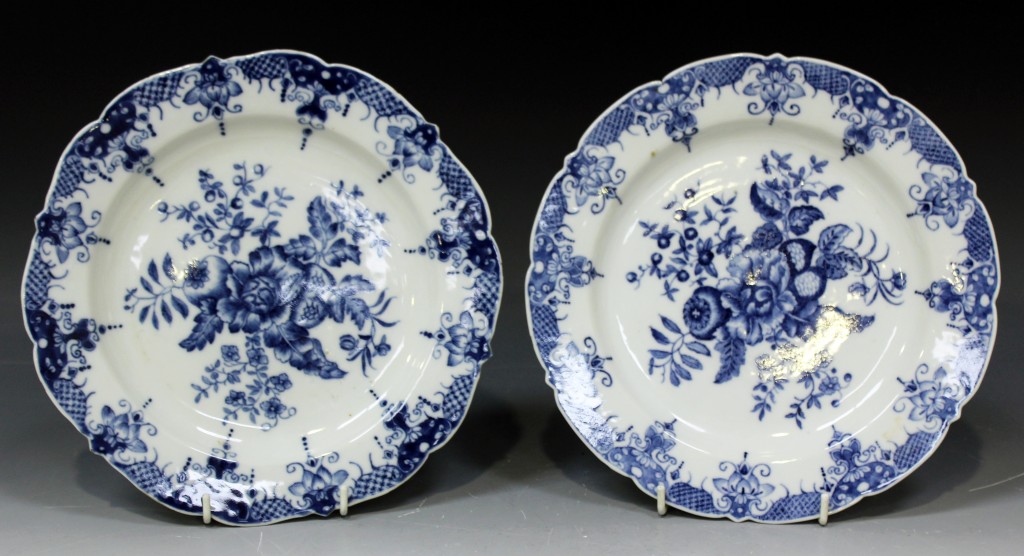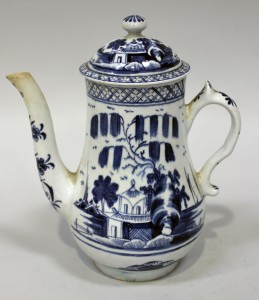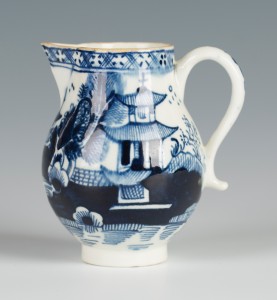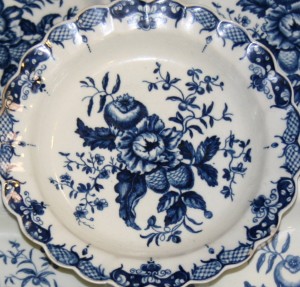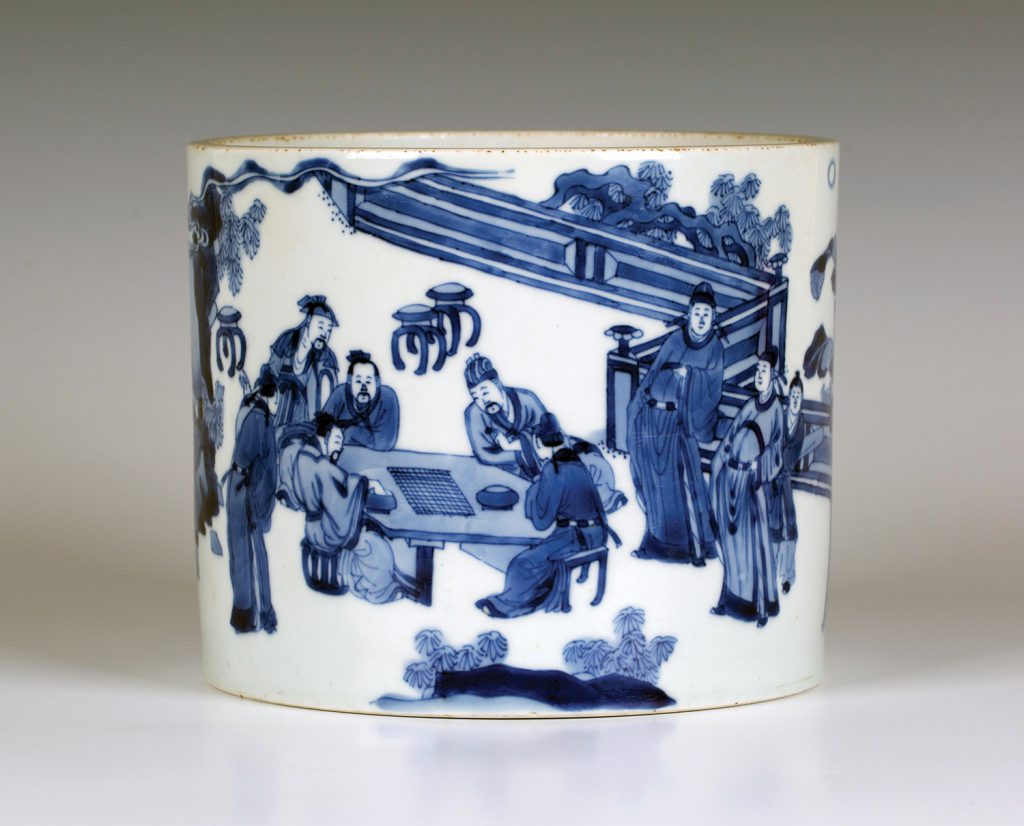
A remarkable selection of Chinese blue and white porcelain dating from the late 16th to the early 18th century has just been sold at auction by Toovey’s in their December specialist Asian Art sale. This important collection was bought in the 1960s and 1970s in London. Its sale attracted international attention.
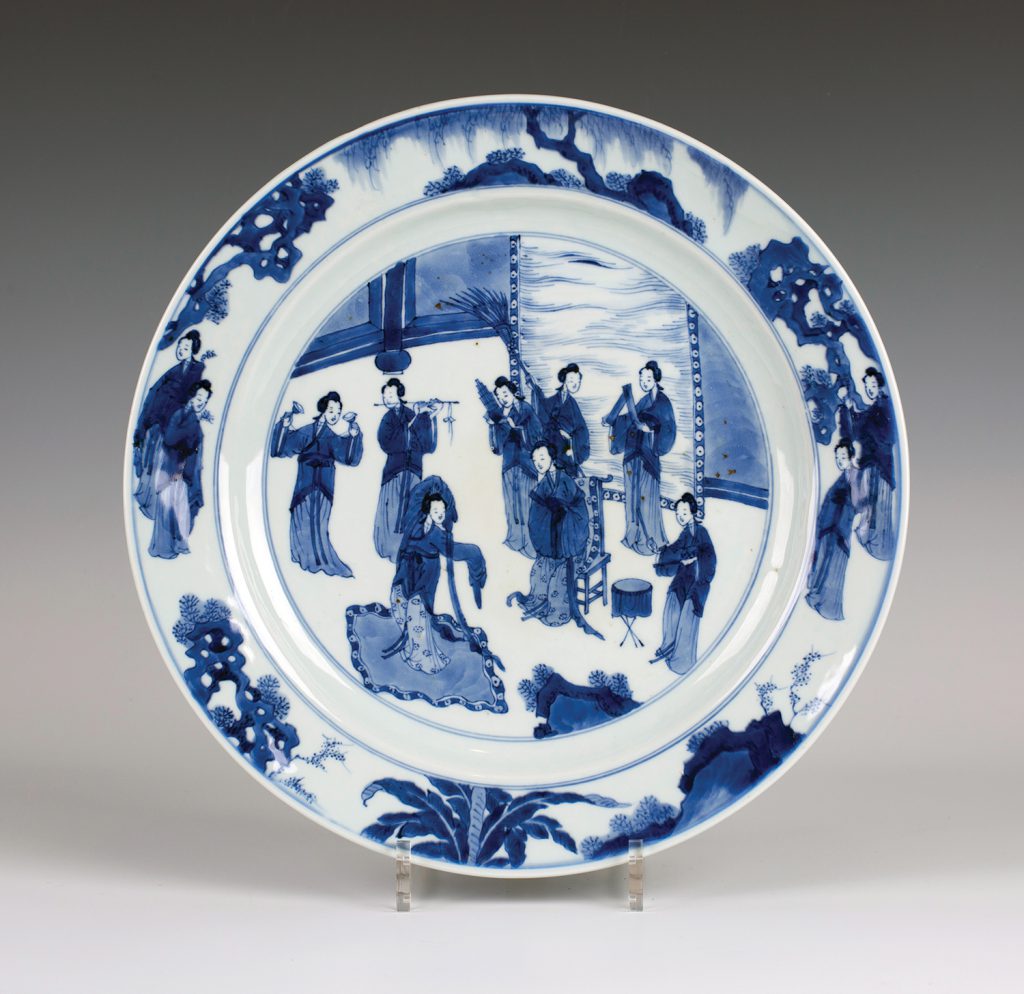
Chinese blue and white has from the 16th century appealed to an international market. The decorative designs of late 16th century blue and white porcelain had been characterized by panels filled with flowers, precious objects and Buddhistic emblems in often repeated patterns, contained within compartmentalized borders. These motifs can be seen on the Wanli period Kraak porcelain dish seen here.
The Manchu threat meant that money was diverted to the Ming army which, together with the luxury and corruption of the Court of Wanli, deprived the kilns at Jingdezhen of imperial patronage. This had a liberating effect on the Jingdezhen potters and by the time of the death of the Ming Emperor, Wanli (1572-1620) a noticeable shift in the design and decoration of Chinese porcelain had occurred. This new and exceptional work would span the late Ming and early Qing Dynasties and is therefore termed the ‘Transitional period’. The Transitional style was more painterly than anything that had gone before. It is filled with movement; the figures appear natural and at ease. Perhaps it was influenced by the tastes of the Dutch merchants for whom much of this blue and white porcelain was produced.
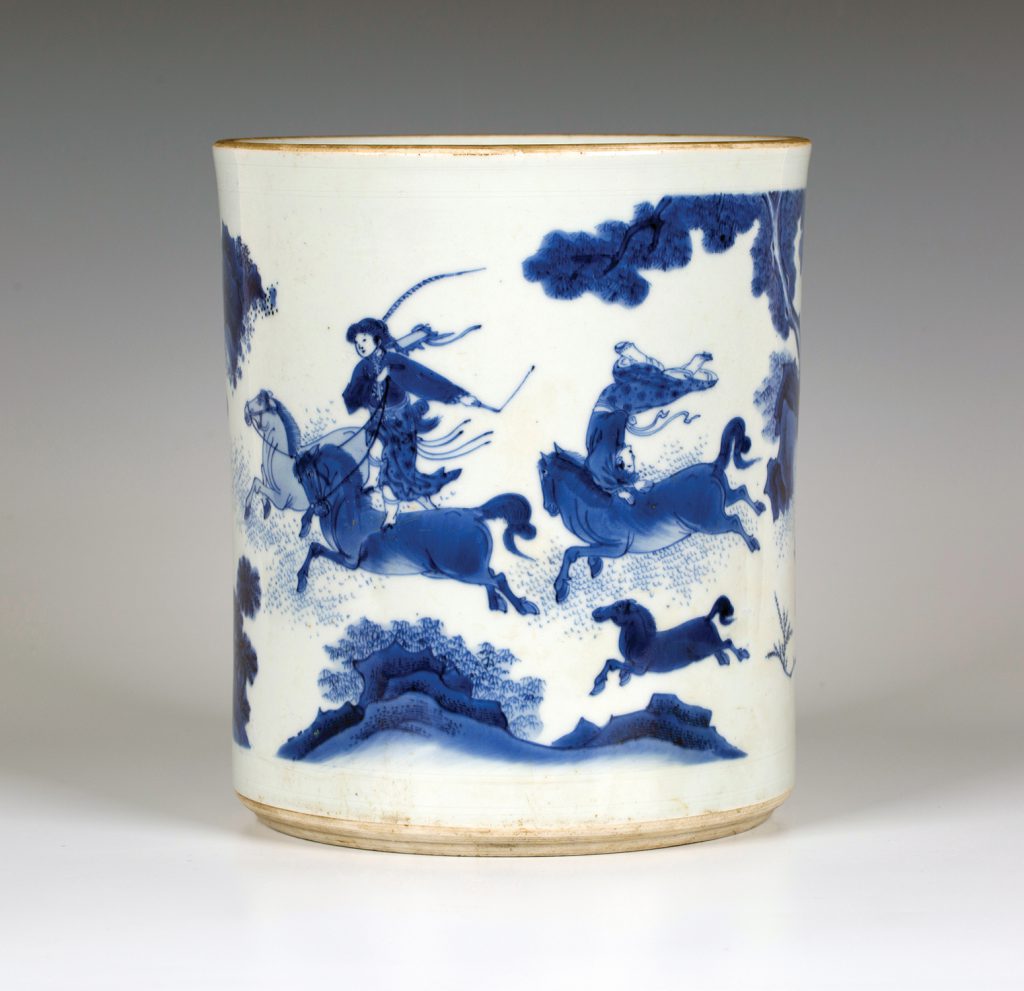
The decoration of Transitional period porcelain typically employs naturalistic themes depicting, beasts, flowers and most especially figure subjects. Figure subjects on Transitional wares are often united by a narrative following the traditions of Chinese opera which incorporated music, song, dance and acrobatics as well as literary art forms. The finely painted ‘bitong’ or brush pot illustrated dates from the mid-17th century. It is a fine example of Transitional period porcelain, decorated with a continuous scene depicting horses and three female acrobat riders galloping through a woodland landscape with trees, rocks and mist. This rare object, measuring 22cm in height, realised £37,000 in Toovey’s December specialist Asian Art auction.
The Transitional aesthetic would continue into the first twenty years of the reign of the Qing Emperor, Kangxi (1662-1722). Kangxi was the fourth and arguably the most famous Emperor of the Qing Dynasty. His reign was marked by long-term stability and a period of relative prosperity.
The Kangxi period is renowned in the history of blue and white porcelain. In 1683 the Imperial Court appointed a director of the factory in Jingdezhen. The restoration of court patronage raised standards even further.
The exceptional quality of the painting and clear cobalt blue distinguishes Kangxi blue and white porcelain and is apparent in the decoration of the brush pot seen here. Our eyes are met by a continuous scene reminiscent of the Transitional with poets and attendants indulging in scholarly pursuits. Some sit at a table playing Weiqi whilst a lute is played. Two figures and an attendant look on as a scholar writes. It fetched £30,000 at Toovey’s reflecting the international appeal and technical brilliance of Kangxi blue and white porcelain, which many ceramic historians believe has never been surpassed.
If you would like more information or advice on your Chinese porcelain and works of art email auctions@tooveys.com or telephone Toovey’s specialist, Tom Rowsell, on 01903 891955.
By Rupert Toovey, a senior director of Toovey’s, the leading fine art auction house in West Sussex, based on the A24 at Washington. Originally published in the West Sussex Gazette.
